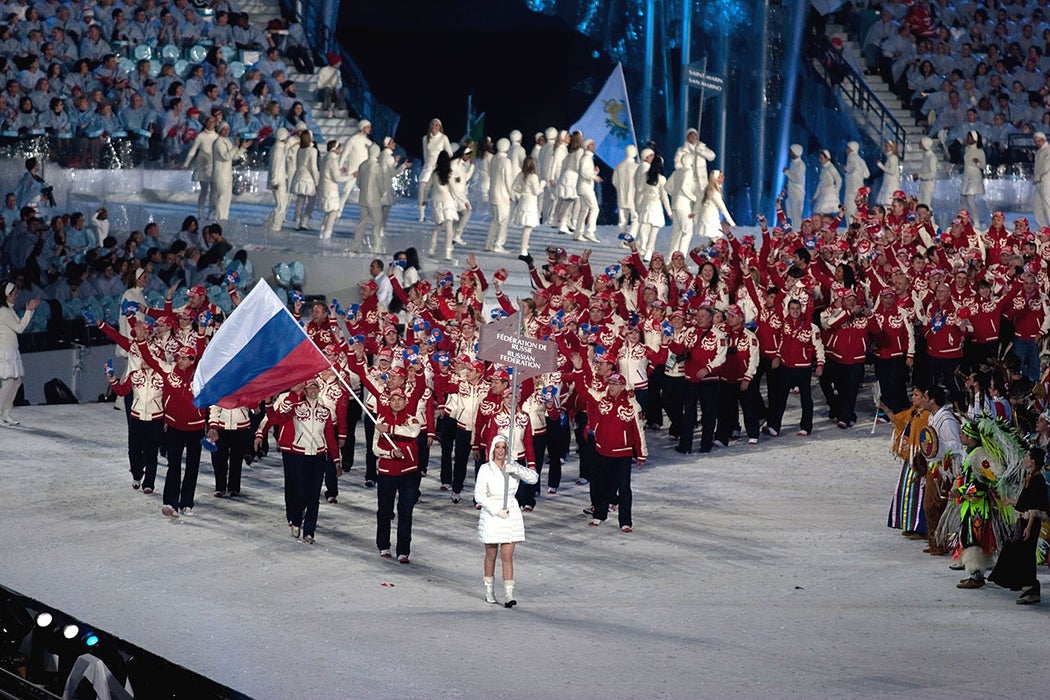If you could receive a shot that would make you 10% stronger, would you take it? If you’re planning on participating in the 2018 winter Olympic Games, your answer should be a resounding and convincing no. On December 5, 2017, the International Olympic Committee banned Russia from participation in the 2018 Winter Olympics for a pattern of doping and deception.
The 2017 film Icarus documents the unraveling of the state-sponsored doping program that resulted in the ban. Although it accurately recounts how Russia got caught, the film declines to engage with the most obvious question raised by the scandal: What is wrong with taking performance enhancing drugs (PEDs)?
Filmmaker Bryan Fogel implies that the answer is simple: fairness. By participating in doping, Russian athletes gained an unfair advantage over the international community. In other words, doping unlevels the playing field.
As with many supposed meritocracies, however, the semblance of a level playing field in sports turns out to be a farce. Not all countries are equally well positioned to succeed in the Olympics. The more populous and wealthier countries have all sorts of advantages: a larger pool of athletes, high-tech training regimens, and access to the best professional coaches.
In this regard, the principles that underlie athletic competition are in tension with each other: While fair play is essential, sports fundamentally celebrate inequalities and hierarchies. Performance-enhancing drugs have the potential to scramble those hierarchies, turning what has traditionally been a natural ordering into an artificial one.
In “The Problem of Doping,” the law professors Doriane Lambelet Coleman and James E. Coleman Jr. point to this preservation of “innate human hierarchies” as the key argument for banning PEDs from competition. This approach to athletics might be seen as radically humanistic. Sports are great because they showcase the limits of natural athleticism, and PEDs give rise to artificial athleticism, thus they should be banned.
But applying this doctrine just leads to a deeper question: How do we draw the line between natural and artificial?
It’s incredibly difficult to figure out which substances should be banned and which substances should be allowed. For example, Human Growth Hormone (HGH) is prohibited in many athletic competitions, but athletes can drink coffee to boost focus. HGH and caffeine are both naturally-occurring compounds, the former produced by the pituitary gland and the latter found in coffee beans. The artificial designation for HGH is based upon conferred advantages, not because caffeine is somehow more natural. Rule-makers have decided that they accept some level of athletic boost but that another is too much; an espresso shot is O.K., but a shot of HGH is out of line.
That’s understandable. If we want games with rules, then lines need to be drawn, and they will be arbitrary. But this means that the distinction between “artificial” PEDs and purported “natural” substances is not a matter of principle. You can’t pick a protein shake off a tree, but it is considered a perfectly natural part of an athlete’s diet.
Compare PEDs with modern training methods, like hyperbaric chambers, a contentious technology, but one that has been widely allowed by rule-making committees. If watching a cyclist stick him- or herself with steroid-filled syringes—as happens in Icarus—seems unnatural, the sight of him or her sprinting on a stationary bicycle with an oxygen mask taped to his or her face and sensors plastered all over his or her body while a computer translates his or her physical performance into numbers on a spreadsheet is positively alien. But while the former is prohibited, the latter is routine.
Because of the blurry lines between technology and athlete, some scholars, like Rayvon Fouché, advocate for viewing competitors as a union of person and machine. This perspective could help solve some of the definitional problems in regulating PEDs. According to Fouché, this idea can also be of great practical importance in establishing more fair competition between comparable bodies, helping to move past the problems inherent in gendered competitions.
But there also seems to be a deeper objection to PEDs, one that exists apart from concerns over fairness, natural hierarchies, or the so-called spirit of the sport. Why do we think drugs are somehow more artificial than Oscar Pistorius’s Flex-Foot Cheetah Blades?
Drugs make us really, really uncomfortable—like, existentially uncomfortable. PEDs illuminate the tenuousness of the idea of natural excellence. Athletic competition is supposed to be the domain where the human will reigns supreme. That’s why we love underdog stories: They sum up what sports is all about. With the advent of PEDs, the triumphs of science threaten to tear down the edifice of human striving.
If we accept PEDs, we accept that bodies are machines, that everything that we laud in our athletes is because of molecules—even grit and determination. We fall through a hole in experience that leads down to the bottom level of cells. And then who are we to praise?







